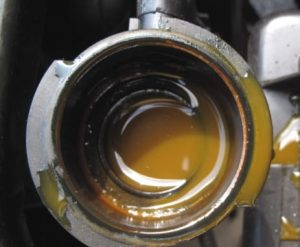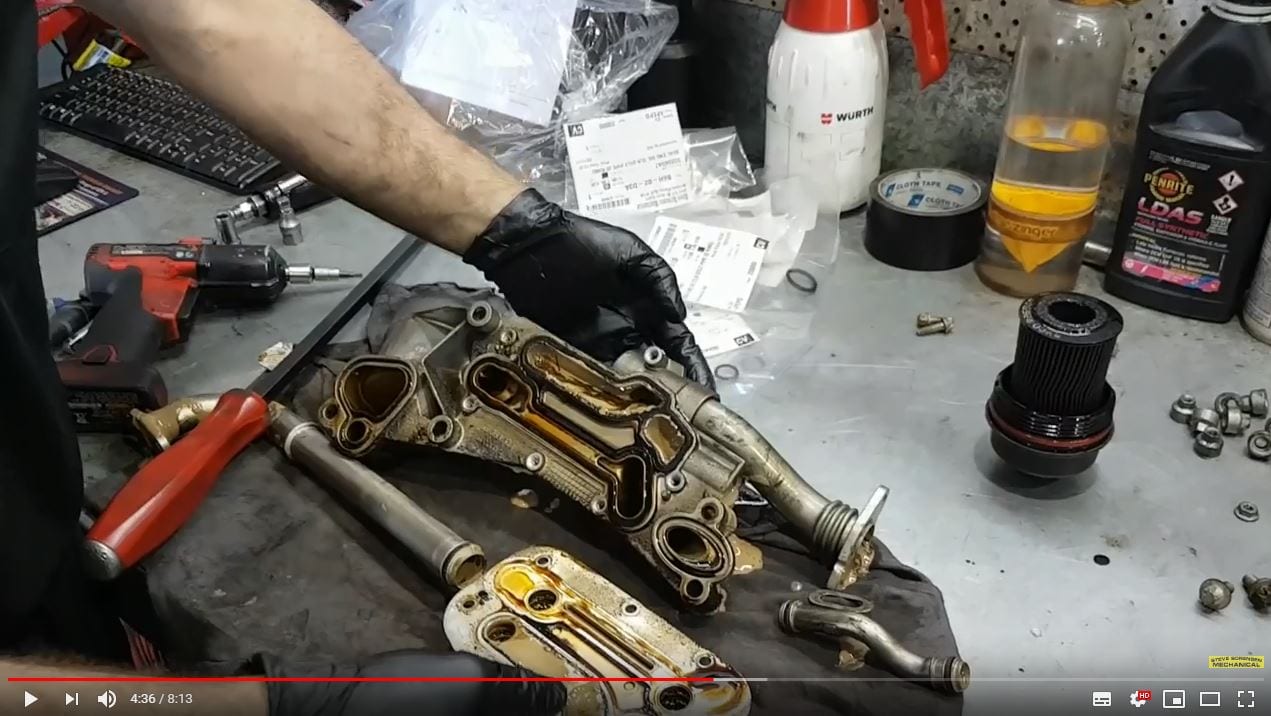

Oil Cooler: Another place that is not very common but is possible is your oil Cooler. If you don’t have any other symptoms but have coolant and oil mixture, there are other places that it could be coming from. When you have a lousy head gasket, you will notice smoke from the exhaust pipe.
OIL IN COOLANT CRACKED
Let’s briefly look at the causes one after the other.Ī cracked head or blown head gasket: The most common area for coolants to get into the crankcase is a cracked cylinder head or blown head gasket. There are many factors that should be taken into place – in considering what causes coolant in the crankcase. Note: there is a normal coolant loss, so you don’t have to bother when you notice a coolant loss once in a while. So, when you pull your dipstick and notice a milky Colour, it tells there’s a coolant-oil mixture. The mixture of these two fluids will gum up the engine passageway, which indicates a ruined engine. However, as the engine runs over time, the coolant and oil will mix, forming a milky liquid. Milky Colour: When antifreeze first gets into the oil pan, it’ll leave an orange, red, green, or brown fluid in the crankcase, depending on the coolant your vehicle utilizes. Even a small amount of coolant in oil will give a sweet smell. Another way you can tell if there are antifreeze and oil mixture is to pull the dipstick and whiff it.

Sweet smell: when you notice a coolant leak without drooping on the ground or anyway visual on the engine bay, chances are the coolant has missed its passageway to the oil pan. If you find no coolant leaks, you can check the oil level to see if the oil is getting into the crankcase. So, if you notice frequent antifreeze drops, ensure you inspect for leaks. There are a few factors to watch out for that indicate water in engine oil Symptoms.Ĭoolant Loss: If you notice continuous antifreeze drops, but there are no leaks from the exhaust pipe or on the ground, odds are the antifreeze is making its way to the oil crankcase. When antifreeze mixes with motor oil, it reduces the oil viscosity and lubricating power, resulting in loss of engine power and lubrication, leading to engine damage. Motor oil mixing coolant indicates head gasket or engine failure. How do I know if there is coolant in Oil?
OIL IN COOLANT HOW TO
In this article, we’ll discuss at length coolant in oil symptoms and how to fix it.
OIL IN COOLANT PROFESSIONAL
To prevent this, once you notice coolant in Oil, you have to fix it immediately or seek professional help. If you ignore this issue for a long time, it can damage your entire engine system. If you see coolant mixing with oil, you have to act fast because it can cause severe engine damage. Have you ever checked your motor oil and noticed a milky liquid on your dipstick? If yes, it means that you have internal oil leaks.


 0 kommentar(er)
0 kommentar(er)
